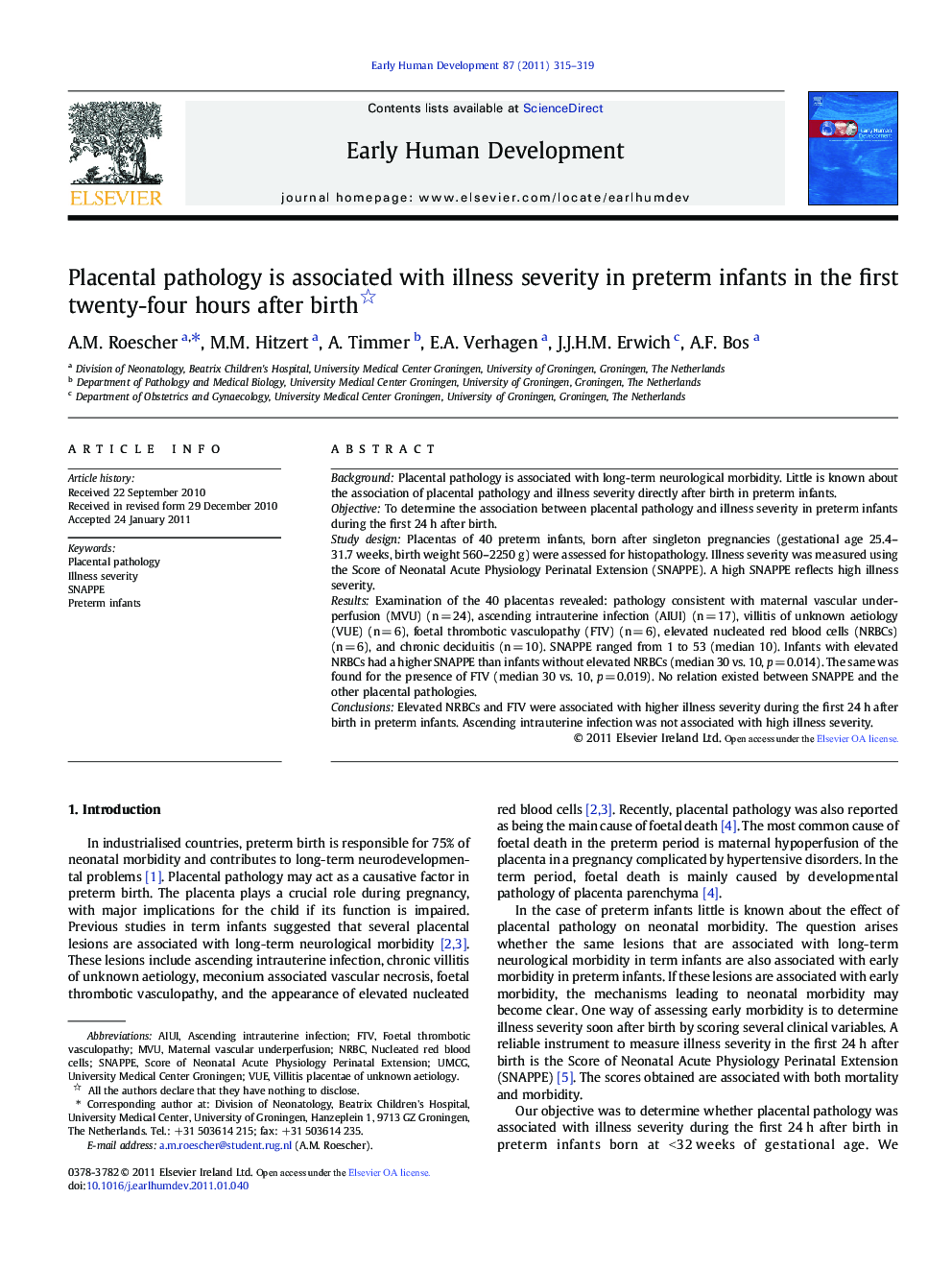| Article ID | Journal | Published Year | Pages | File Type |
|---|---|---|---|---|
| 6172213 | Early Human Development | 2011 | 5 Pages |
BackgroundPlacental pathology is associated with long-term neurological morbidity. Little is known about the association of placental pathology and illness severity directly after birth in preterm infants.ObjectiveTo determine the association between placental pathology and illness severity in preterm infants during the first 24 h after birth.Study designPlacentas of 40 preterm infants, born after singleton pregnancies (gestational age 25.4-31.7 weeks, birth weight 560-2250 g) were assessed for histopathology. Illness severity was measured using the Score of Neonatal Acute Physiology Perinatal Extension (SNAPPE). A high SNAPPE reflects high illness severity.ResultsExamination of the 40 placentas revealed: pathology consistent with maternal vascular underperfusion (MVU) (n = 24), ascending intrauterine infection (AIUI) (n = 17), villitis of unknown aetiology (VUE) (n = 6), foetal thrombotic vasculopathy (FTV) (n = 6), elevated nucleated red blood cells (NRBCs) (n = 6), and chronic deciduitis (n = 10). SNAPPE ranged from 1 to 53 (median 10). Infants with elevated NRBCs had a higher SNAPPE than infants without elevated NRBCs (median 30 vs. 10, p = 0.014). The same was found for the presence of FTV (median 30 vs. 10, p = 0.019). No relation existed between SNAPPE and the other placental pathologies.ConclusionsElevated NRBCs and FTV were associated with higher illness severity during the first 24 h after birth in preterm infants. Ascending intrauterine infection was not associated with high illness severity.
